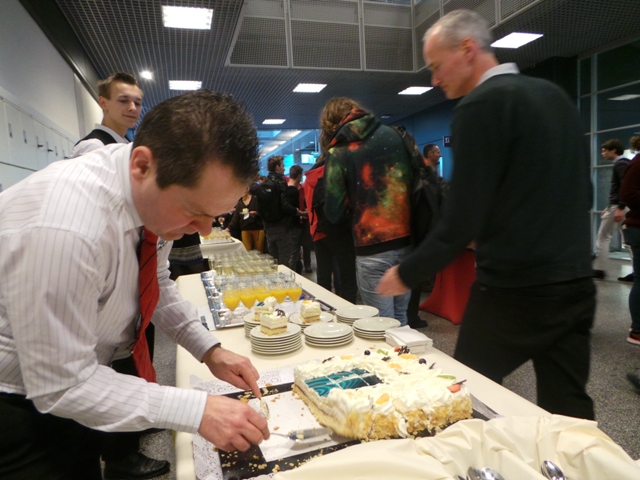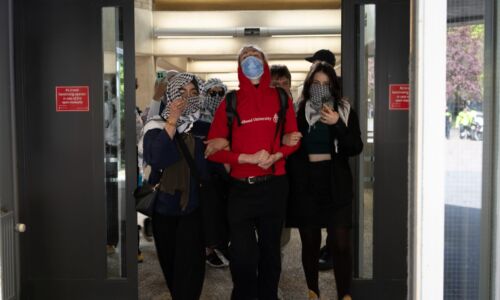Pie for Radboud astronomers
Last weekend, all papers brought the news that scientists have detected gravitational waves for the first time. Thousands of astronomers worldwide have worked on this scientific breakthrough. What was the investment from Nijmegen?

Physicists have never doubted the existence of gravitational waves, says dean Stan Gielen from the beta faculty, when he starts a special lecture on the findings on Monday. It is lunch time, and very crowded in the big hall on the ground floor of the Huygensgebouw. Part of the crowd has to stand in the corridors and on the stairs.
That those waves have recently been detected by two renovated LIGO detectors in the United States, is a significant achievement, he continues. Later, professor in astronomy Paul Groot will confirm that the LIGO detectors are a fine piece of technology. ‘This is 0.2 seconds (that is how long the detected wave lasted, red.) of fantastic science with the most precise measuring equipment ever made by man.’
Signal
Gielen points out that Radboud scientists have played an important role in the research. The past years, they have been working on setting up an international collaboration between groups of astronomers. Gielen points out three scientists in the room: Gijs Nelemans, Samaya Nissanke and Paul Groot, who also helped out with analyzing the data. Nelemans also coordinated one of the supporting scientific articles, about the astronomic interpretation of the signal.
Nobody expected the LIGO detectors to pick up this signal, a small week before the official launch of the detector. This is promising for the future, says Nelemans, after adjusting his microphone for some time. Jokingly, he says: ‘How hard can this microphone be once you have detected gravitational waves?’
Pipes
Later this year, Europe will get a similar measuring device, close to Pisa: Virgo, a machine that consists of kilometers-long pipes and lasers. India has one that is operational, just like Japan. Worldwide, the number of these machines is growing. Paul Groot expects more precise measurements when these machines will start cooperating.
And of all places, Limburg might also get one in the future. Groot already has a name for it: Eijnsteintelescoop. ‘We want to build a telescope in the tunnels of the old mine system in Limburg. That would be fantastic, because we will be the university that is closest. And who do you think will be perfect to coordinate a telescope like that?’ / Martine Zuidweg



